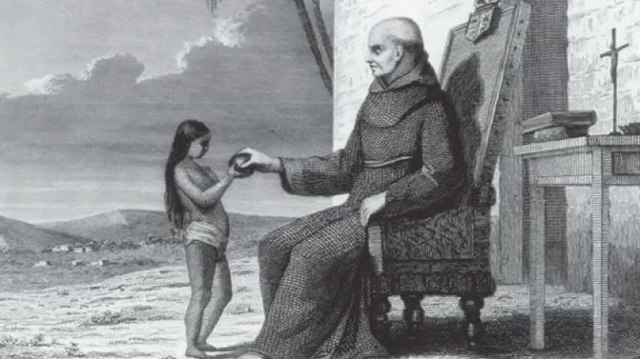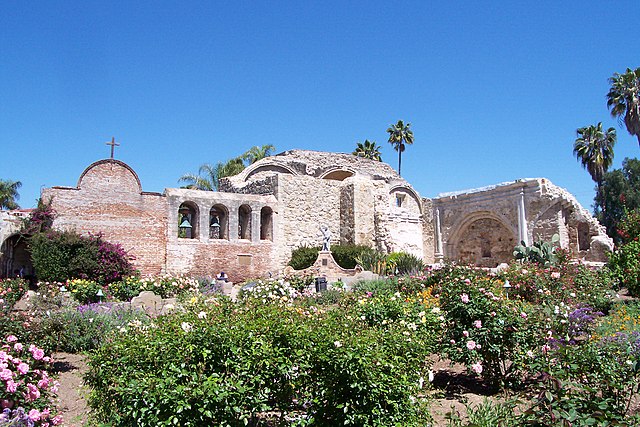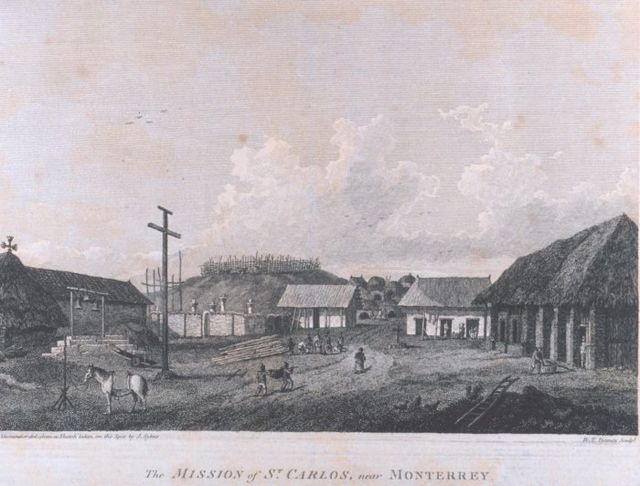Monjeríos were quarters within a colonial Spanish mission for the housing unmarried Indigenous Californian girls and single women. Girls were taken away from their parents to the monjeríos at around the age of seven until marriage. The quarters functioned as a form of social control at the missions for conversion to Catholicism, regulation of the sexuality of girls and women, and for the rearing of Indigenous children as a labor source.
Monjeríos were "spaces of social monitoring" between mission padres and Indigenous girls. Image: 19th century engraving of Narciso Duran with a young neophyte girl (pictured).
Otto von Kotzebue visited Mission Santa Clara in 1824 and noted the miserable condition of the monjeríos.
Eulalia Pérez was a llavera (key-keeper) at Mission San Gabriel who noted an Indigenous woman by the name of Polonia who was recruited to secure the girls in the monjerío.
Fernando Librado was a Chumash man born at Mission San Buenaventura who recalled stories of Indigenous experiences of molestation and resistance at the monjeríos.
Spanish missions in California
The Spanish missions in California formed a series of 21 religious outposts or missions established between 1769 and 1833 in what is now the U.S. state of California. The missions were established by Catholic priests of the Franciscan order to evangelize indigenous peoples backed by the military force of the Spanish Empire. The missions were part of the expansion and settlement of New Spain through the formation of Alta California, expanding the empire into the most northern and western parts of Spanish North America. Civilian settlers and soldiers accompanied missionaries and formed settlements like the Pueblo de Los Ángeles.
A view of Mission San Juan Capistrano. At left is the façade of the first adobe church with its added espadaña; behind the campanario, or "bell wall" is the "Sacred Garden." The Mission has earned a reputation as the "Loveliest of the Franciscan Ruins."
Mission San Luis Rey de Francia, circa 1910. This mission is architecturally distinctive because of the strong Moorish lines exhibited.
The Missionaries as They Came and Went. Franciscans of the California missions donned gray habits, in contrast to the brown that is typically worn today.
A drawing of Mission San Carlos Borromeo de Carmelo prepared by Captain George Vancouver depicts the grounds as they appeared in November 1792. From A Voyage of Discovery to the North Pacific Ocean and Round the World.








